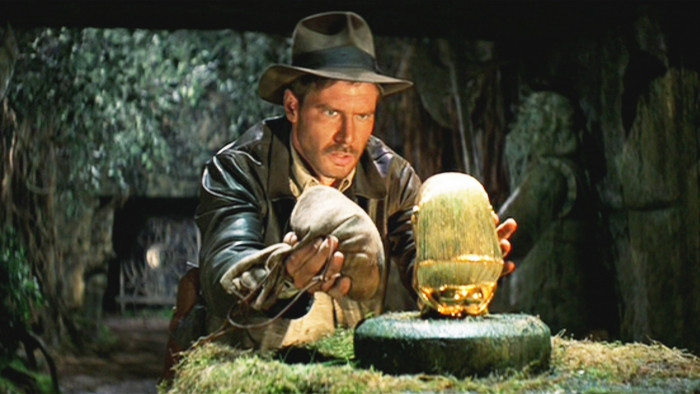The annoying thing about “time” is that it “goes on” so people that were alive ages ago, aren’t around anymore. For this reason, we can’t talk to any of the cavemen and ask them what it was like when they would stroke their pet T-rexes. We can’t ask them whether they had scales or feathers. And we can’t ask any actual T-rexes either because they are also all dead.
As it goes, most people imagine a T-rex as a giant lizard-type thing with puny weakling arms. Like Adrian Mole with the legs of The Rock and the tail of, I dunno, a T-rex. However, recent research and discovery has found that actually, a lot of dinos had feathers – a lot of them were big birds, basically. A number of tyrannosaurs – direct ancestors of the T-rex – had a hefty mane of feathers on their shit, so it’s been heavily hinted that the big dog itself would have feathers, too.
But hey, some science brers have done a bit of research and discovered exactly what type of skin the humble old shrimp-armed T-rex would actually have owned. They examined new skin impressions found near Baker, Montana, and they have come to a conclusion. Prepare those skin-definition-powered loins of yours – the T-rex’s skin was…
*bum roll please*
TEXTURED WITH SMALL, PEBBLY SCALES.
Here, look:

Scott Persons, a paleontologist at the University of Alberta says:
“Now that we’ve found these multiple patches of preserved tyrannosaur hide from multiple places across the body, it looks pretty clear that at least the majority of the T-rex was not covered in feathers.”
So you can relax, basically. Jurassic Park was right – the Tyrannosaurus rex was not Foghorn Leghorn with teeth; it wasn’t Orvil’s dangerous brother; it wasn’t just a big emu with crap arms on the front. It was a big scary dragon with hard scales.
But how come smaller tyrannosaurs had feather boas but the mother matron didn’t? Well, Persons says:
“I definitely think that size had something to do with it. If you think about really, really big terrestrial mammals today, like elephants, rhinos, hippos, and cape buffaloes, although they are not hairless, they are very much reduced in the amount of hair that they do have.”
This is because larger animals have a harder time of it when it comes to cooling down. A huge coat of feathers would slow this down and cause overheating – and nobody likes a sweaty T-rex.

Of course, there always has to be one bird-loving killjoy, hell-bent on ruining all the lizard fun. Stephen Brusatte, a tyrannosaur expert at the University of Edinburgh, isn’t buying it:
“It takes very special circumstances to preserve soft tissues like feathers, and as far as we know, these big tyrannosaurs are not preserved in those settings.”
He mentions that if you found fossils of elephant skin, you might presume they were hairless, but in reality, you know that elephants have hair, still. He continues:
“I don't think we need to throw out the image of big fluffy tyrannosaurs quite yet.
“It's still very possible, even likely in my mind, that some big tyrannosaurs were fluffy Big Birds from hell.”
To be honest, he’s turned me round to the idea – fluffy Big Birds from hell sound absolutely quality.
(Images: Rex/Peter Larson)










